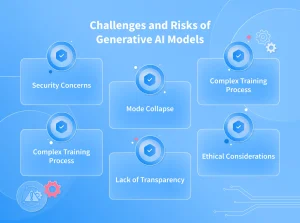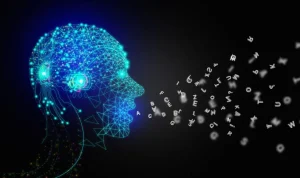Introduction:
In recent years, Generative AI has emerged as a groundbreaking force, redefining the boundaries of creativity and innovation. From creating hyper-realistic images to composing music, crafting written content, and even assisting in scientific discoveries, generative AI is reshaping industries and empowering individuals to unlock their creative potential. In this blog, we explore the fascinating world of generative AI, its applications, and its profound impact on various sectors.
What is Generative AI?
Generative AI is a branch of artificial intelligence that uses machine learning models to generate new content, such as text, images, audio, and video. Unlike traditional AI systems that rely on predefined rules, generative AI leverages deep learning techniques like neural networks to learn patterns and create original outputs. Popular examples include OpenAI’s ChatGPT, DALL-E, and MidJourney, which have gained widespread acclaim for their ability to generate high-quality content.

Key Technologies Behind Generative AI:
Generative AI is powered by advanced technologies, including:
1. Neural Networks:
Deep neural networks form the backbone of generative AI, enabling models to learn from vast datasets and generate realistic outputs.
2. Transformer Models:
Transformers like GPT (Generative Pre-trained Transformer) have revolutionized natural language processing, allowing AI to understand and generate human-like text.
3. GANs (Generative Adversarial Networks):
GANs consist of two networks—a generator and a discriminator—that work together to produce realistic content by refining outputs iteratively.
4. Diffusion Models:
Emerging as a powerful alternative to GANs, diffusion models are gaining popularity for generating highly detailed images and animations.
Applications of Generative AI:
Generative AI has a wide range of applications across industries, making it a versatile tool for businesses and individuals alike. Here are some notable examples:
1. Content Creation:
-
Writers and marketers use tools like ChatGPT to draft articles, create ad copy, and generate ideas for campaigns.
-
Visual artists leverage platforms like DALL-E to produce stunning digital artwork and illustrations.
2. Entertainment:
-
Generative AI is transforming the entertainment industry by generating scripts, designing virtual worlds, and composing music.
-
Game developers use AI to create realistic characters and immersive storylines.
3. Healthcare:
-
AI-powered systems assist in drug discovery by predicting molecular structures and simulating chemical interactions.
-
Generative AI models help design personalized treatment plans based on patient data.
4. Education:
-
Educators utilize AI tools to generate engaging learning materials and interactive content.
-
Generative AI platforms aid students by simplifying complex concepts and assisting with assignments.
5. E-commerce:
-
Retailers enhance customer experiences by generating product descriptions, personalized recommendations, and virtual try-on features.
6. Architecture and Design:
-
Architects use generative AI to create 3D models and explore innovative design possibilities.
-
Interior designers generate custom layouts and visualize spaces with AI assistance.
Benefits of Generative AI:
Generative AI offers numerous advantages, including:
1. Enhanced Creativity:
AI acts as a creative collaborator, enabling individuals and teams to explore new ideas and possibilities.
2. Time Efficiency:
Automating content generation saves time, allowing professionals to focus on strategic tasks.
3. Cost Reduction:
Generative AI reduces production costs by automating processes that would otherwise require significant human effort.
4. Personalization:
AI can generate tailored content and solutions, improving user experiences and engagement.
5. Scalability:
Businesses can scale operations by generating large volumes of high-quality content quickly.

Challenges and Ethical Considerations
Despite its immense potential, generative AI raises several challenges and ethical concerns:
1. Bias in AI Models:
AI models may inherit biases from training data, leading to unfair or inaccurate outputs.
2. Intellectual Property Issues:
The use of AI-generated content may infringe on copyright laws, sparking debates about ownership and originality.
3. Misinformation:
Generative AI can be misused to create fake news, deepfakes, and misleading information, posing risks to society.
4. Job Displacement:
Automation through AI could disrupt traditional job roles, necessitating upskilling and workforce adaptation.
5. Environmental Impact:
Training and running AI models require significant computational resources, contributing to energy consumption and carbon emissions.
The Future of Generative AI
As generative AI continues to evolve, its impact will grow even more profound. Here are some key trends to watch:
1. Improved Model Efficiency:
Future models will focus on reducing computational requirements, making AI more accessible and environmentally friendly.
2. Integration with Augmented Reality (AR) and Virtual Reality (VR):
Generative AI will play a crucial role in designing immersive AR and VR experiences.
3. Ethical AI Frameworks:
Efforts to develop guidelines and regulations will ensure responsible AI usage and address ethical concerns.
4. Democratization of AI Tools:
As generative AI tools become more user-friendly, individuals without technical expertise will harness its power.
5. Collaborative AI Systems:
The future will see increased collaboration between humans and AI, enabling seamless integration of creativity and technology.
Examples:
Some ai systems are given below.
-
Chatgpt
-
Gemini
-
Poe
Conclusion:
Generative AI is revolutionizing the way we think about creativity, innovation, and problem-solving. Its applications span diverse fields, offering unprecedented opportunities to enhance efficiency, reduce costs, and unlock new possibilities. However, as we embrace this transformative technology, it is essential to address ethical challenges and ensure its responsible use. By harnessing the power of generative AI, we can pave the way for a future where technology and human ingenuity work hand in hand to shape a better world.
